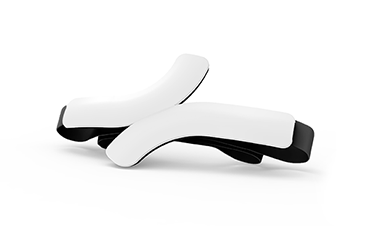Heart rate variability measures the changes in the time interval between your individual heart beats. It is done by using a specialized heart rate monitor such as QardioCore that measures the time between each heartbeat interval, also known as R-R intervals, on the ECG/EKG trace. Here we present five use cases that utilize HRV tracking and analysis so you can better understand the benefits of HRV monitoring.
Heart Health Evaluation
When it comes to evaluating heart health, you might be surprised to learn that blood pressure, cholesterol and other common biomarkers are not the best indicators of your heart performance. Perhaps the most important measure to focus on when assessing your heart health is heart rate variability. And although you or your doctor might not know your heart rate variability levels, HRV is frequently used to track health and recovery of heart patients and it is the predictive indicator of overall cardiovascular health.
Training Optimization
Top athletic training and performance optimization is as much art as it is science and knowing how an athlete is responding to training and recovery is what is measured by heart rate variability. The heart accelerates during inhalation and slows down during exhalation – the difference is your HRV. High HRV, which shows larger gaps between heart beats shows positive adaptation and fitness while lower HRV with smaller gaps indicates fatigue and overtraining. Knowing your heart rate variability means understanding your body and its response to physical overload so you can tailor your training regime for optimal results.
Stress Analysis
Heart rate variability is an excellent, non-invasive way to measure stress. Stress is an important metric to track as many people don’t recognize the signs and symptoms, which often leads to deeper health issues if left unmanaged. Studies have shown that changes in heart rate variability are tied to a variety of health problems, from heart diseases, diabetes to post-traumatic stress disorder (PTSD). If you suffer from high blood pressure, identifying situations that cause you stress is important and you can easily measure your heart rate variability with QardioCore, a wireless ECG monitor.
Improving Meditation
Higher heart rate variability is strong biomarker for general health and resilience as high HRV indicates a relaxed, low-stress mind, while lower HRV suggests the need for sleep and rest. As meditation requires a calm, relaxed mind, measuring heart rate variability and training for a higher HRV is an effective way to improve your meditation state.
Anxiety Treatment
It has been shown that anxiety disorders are associated with low heart rate variability values. Anxiety disorders are the most common psychiatric disorders today and have been shown to increase the risk of heart disease. So monitoring heart rate variability of anxiety patients is important as changes in HRV reflect the effectiveness of a treatment.
QardioCore is a medical grade ECG/EKG monitor that continuously measures heart rate variability by tracking the time between R-R intervals. It is a wireless monitor that doesn’t require any skin preparation, patches or gels and can be worn anytime, anywhere. Discover how easy it is to learn about your heart health with QardioCore.




